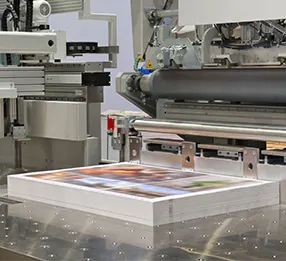First impressions are critical, especially in professional networking. Your business card is often the first tangible interaction potential clients or colleagues have with your brand. A poorly designed card can severely undermine even the strongest professional presence. This comprehensive guide details common mistakes in English business card design, along with proven strategies for creating impactful, memorable cards that elevate your professional image.
Content mistakes: avoiding linguistic and informational errors
The information on your business card is paramount. Errors or unclear communication can damage your credibility and leave a negative lasting impression. Let's examine key areas demanding attention to detail.
Linguistic errors: professionalism starts with precision
- Grammar and Spelling: Typos and grammatical errors instantly diminish professionalism. A single misplaced comma or misspelled word can convey carelessness and unprofessionalism. Meticulous proofreading—ideally by a second pair of eyes—is crucial before printing.
- Inappropriate Tone and Style: Maintain a professional tone consistent with your industry and target audience. Avoid overly casual language (“Hey!”) or overly formal wording (“Esteemed Sir/Madam”). Choose a font reflecting professionalism. Sans-serif fonts like Arial or Calibri are generally preferred over decorative options for their clean readability.
- Inconsistent Terminology: Maintain consistent use of titles, abbreviations, and company names throughout the card and across all marketing materials. Inconsistency creates confusion and undermines your brand's identity.
- Translation Errors (for International Audiences): If targeting non-English speakers, professional translation services are mandatory. Relying solely on machine translation tools risks awkward phrasing, grammatical errors, and potentially offensive mistranslations. A professional translator ensures accuracy and cultural appropriateness.
Information overload and lack of clarity: prioritize and simplify
Overloading your business card with information makes it hard to read and diminishes its impact. Prioritize essential details to make a clear and memorable impression.
- Too Much Information: A cluttered card is visually unappealing and difficult to read. Prioritize essential information: your name, title, company, contact details (phone number, email, website). Avoid unnecessary details that distract from the core message. Aim for a clean and uncluttered design.
- Unclear Contact Information: Ensure contact details are easily readable and understandable. Use a consistent format for phone numbers (e.g., +1-555-123-4567) and email addresses. Avoid shortened URLs that might be difficult to decipher without a QR code.
- Missing Crucial Information: Tailor information to your audience. For a freelancer, a portfolio website link is essential. For a salesperson, a direct sales line may be more effective. Think strategically about what information will best serve your networking goals.
Design mistakes: visual appeal and professionalism
Visual aspects are just as crucial as content. A poorly designed card, regardless of perfect content, can still make a negative impression.
Visual clutter and poor readability: prioritizing clarity
- Inappropriate Fonts: Choose legible fonts that reflect your brand. Avoid more than two fonts per card. A clean sans-serif font for body text paired with a slightly more elegant serif font for headings can be effective. Aim for at least 8-point font size for easy readability.
- Poor Colour Choices: Consider colour psychology. Blue often represents trust, while red can symbolize energy. Choose colours consistent with your brand, ensuring sufficient contrast between text and background for optimal readability. Avoid jarring colour combinations.
- Overuse of Graphics and Images: While visuals enhance appeal, avoid overwhelming the card. A simple, high-quality logo and perhaps a subtle background pattern are sufficient. Ensure high-resolution images to prevent pixelation.
Low-quality printing and materials: the importance of first impressions
- Cheap Paper Stock: High-quality paper conveys professionalism. Thicker card stock (at least 300gsm) feels more substantial and luxurious. Consider using uncoated or slightly textured paper for a premium feel. The weight of the card itself contributes to a positive first impression.
- Poor Printing Resolution: Blurry printing drastically reduces quality. Ensure high-resolution settings (at least 300 DPI) for crisp results. Invest in a quality printing service that understands the nuances of professional business card production.
- Inadequate Finishing Techniques: Lamination, embossing, or spot UV coating can add a professional touch and enhance durability. These techniques enhance the card's memorability and perceived value.
Best practices and solutions: elevating your business card design
Crafting a compelling business card requires meticulous planning and attention to detail. These best practices will ensure your cards make a lasting impact.
- Proofreading: Multiple rounds of proofreading are essential. Having someone else proofread is highly recommended. A printed test copy allows for the detection of errors before mass production. This simple step can save you from costly reprint errors.
- Using Design Templates: If lacking design skills, use professional templates as a starting point. Numerous online resources offer well-designed, customizable templates.
- Seeking Professional Help: For complex designs or crucial branding, consider a graphic designer. A professional can create a card perfectly reflecting your brand identity and target audience.
- Testing and Iteration: Always print a test run before mass production. This allows for error correction and ensures the final product meets expectations. A small investment in a test run can prevent larger, more expensive mistakes down the line.
Your business card is a miniature representation of your brand. Invest the time and resources needed to ensure it projects a professional and memorable image, significantly contributing to your networking success. Remember, it's often the first and sometimes only lasting impression you make.
